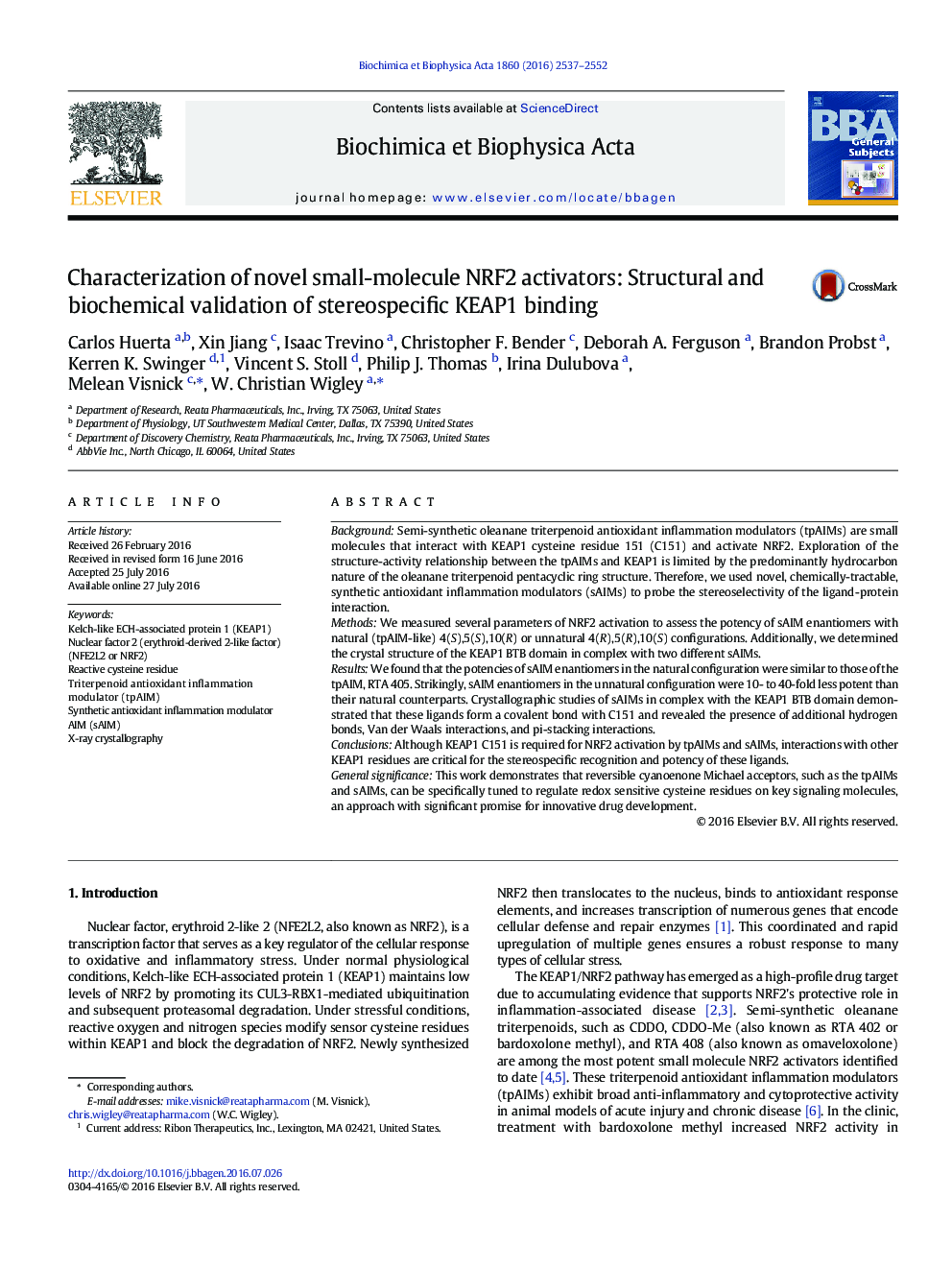| Article ID | Journal | Published Year | Pages | File Type |
|---|---|---|---|---|
| 1947316 | Biochimica et Biophysica Acta (BBA) - General Subjects | 2016 | 16 Pages |
•Oleanane triterpenoid antioxidant inflammation modulators (tpAIMs) bind KEAP1 C151.•tpAIM scaffold stereochemistry limits structure-activity relationship exploration.•Purely synthetic antioxidant inflammation modulators (sAIMs) mimic tpAIM activity.•sAIM enantiomers exhibit stereoselective NRF2 activation.•Specific ligand-protein interactions near C151 affect potency and stereoselectivity.
BackgroundSemi-synthetic oleanane triterpenoid antioxidant inflammation modulators (tpAIMs) are small molecules that interact with KEAP1 cysteine residue 151 (C151) and activate NRF2. Exploration of the structure-activity relationship between the tpAIMs and KEAP1 is limited by the predominantly hydrocarbon nature of the oleanane triterpenoid pentacyclic ring structure. Therefore, we used novel, chemically-tractable, synthetic antioxidant inflammation modulators (sAIMs) to probe the stereoselectivity of the ligand-protein interaction.MethodsWe measured several parameters of NRF2 activation to assess the potency of sAIM enantiomers with natural (tpAIM-like) 4(S),5(S),10(R) or unnatural 4(R),5(R),10(S) configurations. Additionally, we determined the crystal structure of the KEAP1 BTB domain in complex with two different sAIMs.ResultsWe found that the potencies of sAIM enantiomers in the natural configuration were similar to those of the tpAIM, RTA 405. Strikingly, sAIM enantiomers in the unnatural configuration were 10- to 40-fold less potent than their natural counterparts. Crystallographic studies of sAIMs in complex with the KEAP1 BTB domain demonstrated that these ligands form a covalent bond with C151 and revealed the presence of additional hydrogen bonds, Van der Waals interactions, and pi-stacking interactions.ConclusionsAlthough KEAP1 C151 is required for NRF2 activation by tpAIMs and sAIMs, interactions with other KEAP1 residues are critical for the stereospecific recognition and potency of these ligands.General significanceThis work demonstrates that reversible cyanoenone Michael acceptors, such as the tpAIMs and sAIMs, can be specifically tuned to regulate redox sensitive cysteine residues on key signaling molecules, an approach with significant promise for innovative drug development.
Graphical abstractFigure optionsDownload full-size imageDownload high-quality image (147 K)Download as PowerPoint slide
